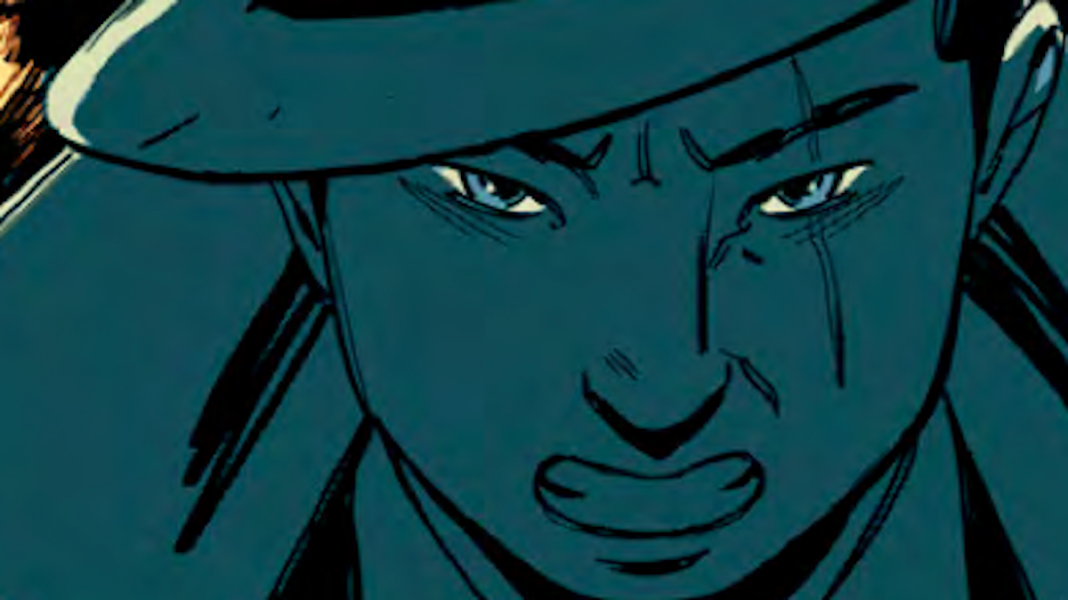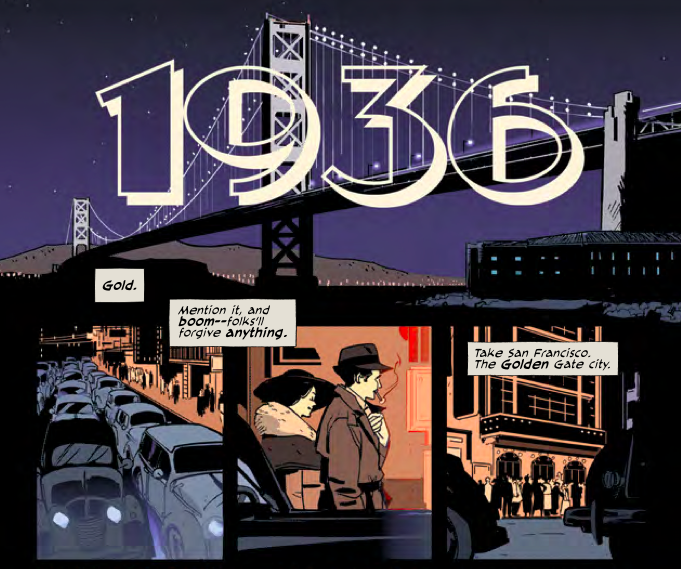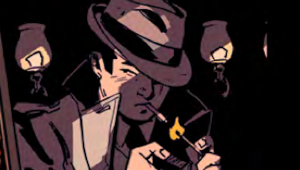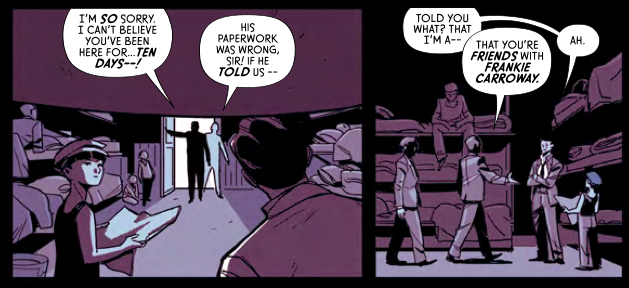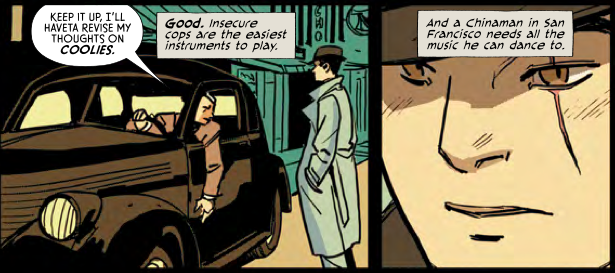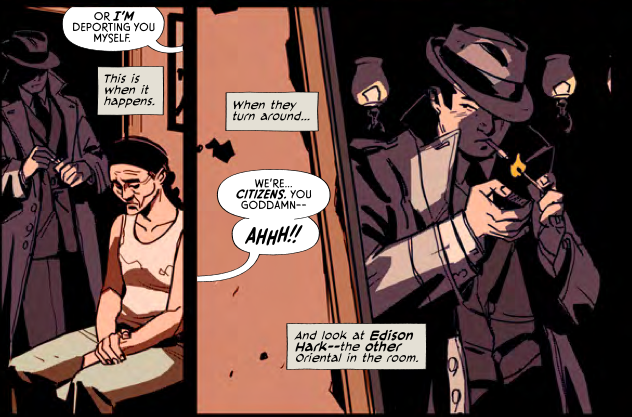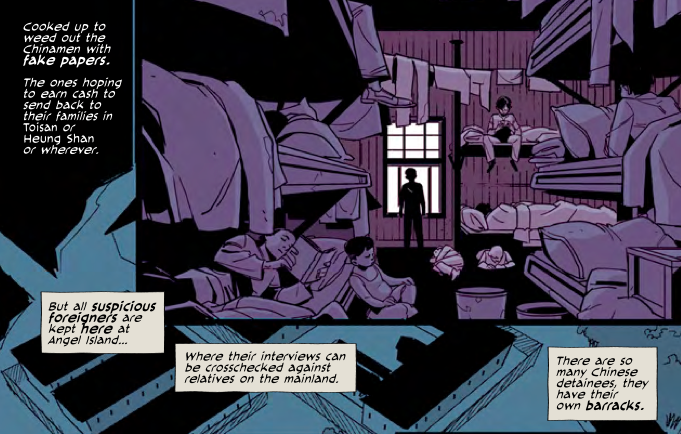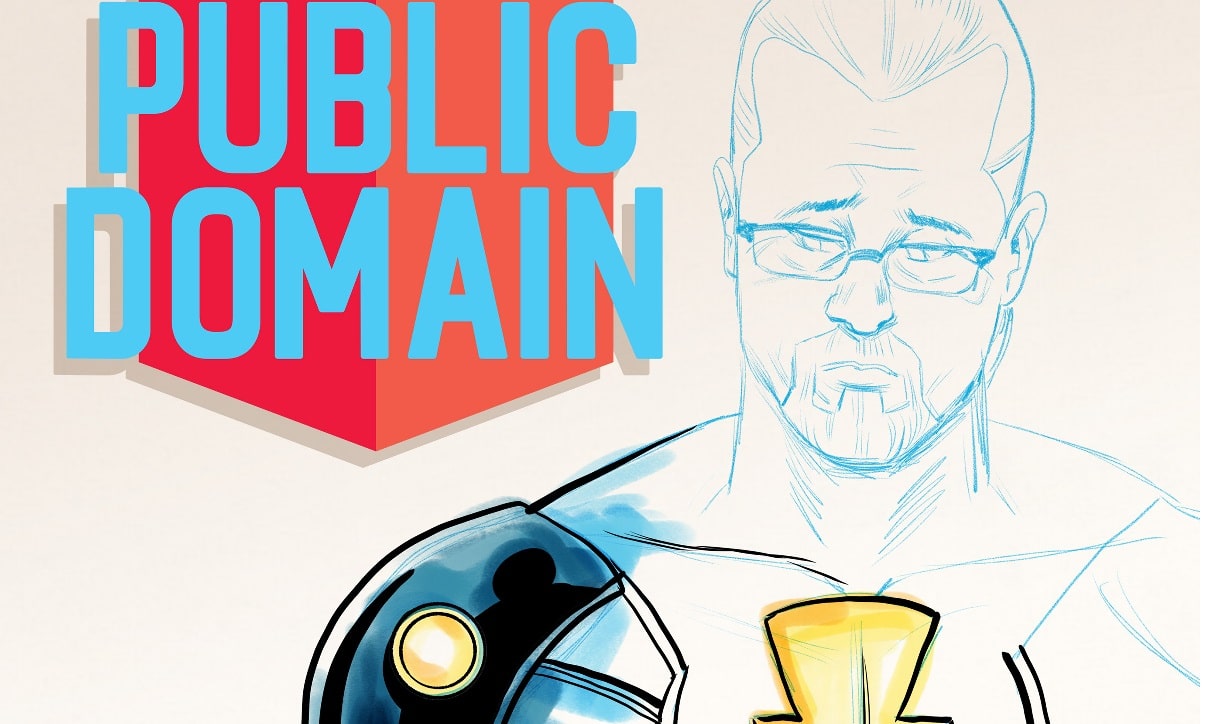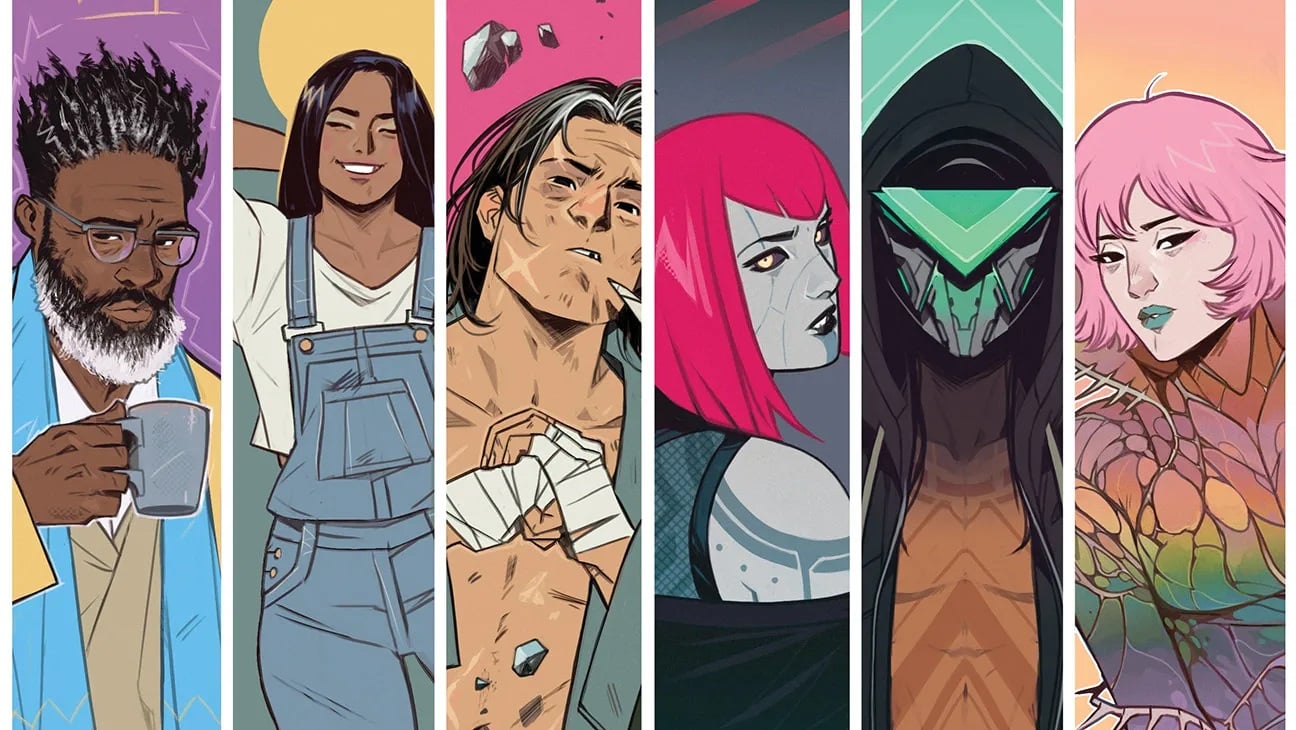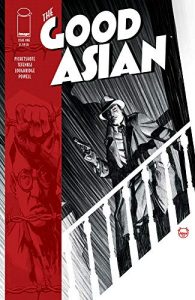
The Good Asian #1
Written by: Pornsak Pichetshote
Art by: Alexandre Tefenkgi
Colors by: Lee Loughridge
Letters by: Jeff Powell
Published by: Image Comics
In The Good Asian #1, readers are introduced to Detective Edison Hark, a Chinese-American man who has been working as a police detective in his home state of Hawaii.
When we first meet Hark, he is being interrogated at Angel Island in California, a sequence that swiftly introduces the character, establishes the historical situation (which includes immigration bans and racism), and demonstrates how seriously the comic takes its verisimilitude (as revealed by the afterword, the sequence’s dialogue includes quotes from actual Angel Island transcripts).
The scene is something of an overture, offering a glimpse of many of the parts which come together to make The Good Asian #1 an issue that simply cannot be missed.
Detective Edison Hark
In Walter Mosley’s Devil in a Blue Dress, the first book in the Easy Rawlins mystery series, the protagonist is conscripted into service out of desperation: a Black war veteran, he’s been fired from his job at a Southern California defense plant, and he can’t turn down the money he’s offered by a rich white man to locate a missing person. Set in 1948 Los Angeles, the novel offers a singular perspective.
The Good Asian #1 distinguishes itself from other noir because it deeply understands the way that the perspective of a detective can afford an outsider the opportunity to uncover the truth of not just the crime at hand, but of the larger systemic problems which made the crime possible.
For Detective Hark, who is one of the first Asian-American men in the United States to become a badge-carrying member of a police force, this conundrum is particularly fraught. For Mosley’s Rawlins, the police are largely antagonistic, a violent and racist force of nature who are aware that they face a lower standard of legal responsibility based on the color of their quarry’s skin; however, in The Good Asian, Hark is a police officer himself, adding an extra wrinkle to the proceedings.
Being a member of the police force does not shield Hark from racism, either from within the ranks of the cops or from outside (and when the connection does afford him special treatment, it’s a mixed victory at best). Hark’s singular perspective, slung between different communities, offers an illuminating exploration of the realities of life for Chinese immigrants in San Francisco in the 1930s.
By the conclusion of The Good Asian #1, there are several mysterious plot threads that have been established. However, like the mystery at the heart of My Favorite Thing is Monsters by Emil Ferris, the most compelling conflict is not necessarily between detective and murder mystery, but rather, between the detective and society… or possibly, between the detective and themselves.
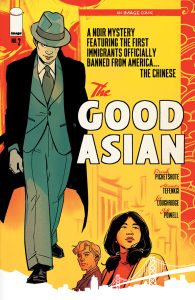
But should any of these conflicts be differentiated from one another? We’ll have to wait for subsequent issues of The Good Asian to find out… and the fact that the release date of the second issue seems so far away is simply a demonstration of how well this issue does its job of laying the foundations for this story.
A nuanced approach
In The Beat’s interview with the Pichetshote and Tefenkgi, I asked about the use of different shaped word balloons to convey that the characters were speaking in different languages. Pichetshote explained that he and letterer Powell had a shared desire to convey as much meaning with as little copy as possible.
That ethos is on display throughout The Good Asian, perhaps most obviously through the interesting technique of utilizing red-colored boxes to indicate the specific details of a scene that are being observed by Hark. Not only does this serve to emphasize Hark’s prowess as a detective, marking details that are likely to otherwise be overlooked by the reader, but it allows for one of the essential elements of a noir story – the observation of clues – to be conveyed in a fast-paced, innovated manner.
Chinatown Noir
It cannot be understated how gorgeous this book looks, either. From the very first pages, the reader has an immediate sense of place, and Loughridge’s excellent colors work in tandem with the historical landscapes to transport the reader to the Bay Area during the Depression. This is no doubt thanks in part to Grant Din, who is credited as the book’s historical consultant.
However, some of the credit simply lies with Tefenkgi’s excellent art. In addition to delivering on the historical San Francisco landscapes, conversational scenes emphasize nuanced character emotions. By contrast, action sequences are fast-paced and filled with movement. And somehow, The Good Asian #1 packs all these disparate (but essential) noir elements into one 30-page package.
The Good Asian #1
It doesn’t matter if you’re a fan of noir comics, of historical fiction, or of stories that give voice to underrepresented perspectives: you’ll want to get your hands on The Good Asian #1.
The Good Asian #1 is available today at your local comic shop.


